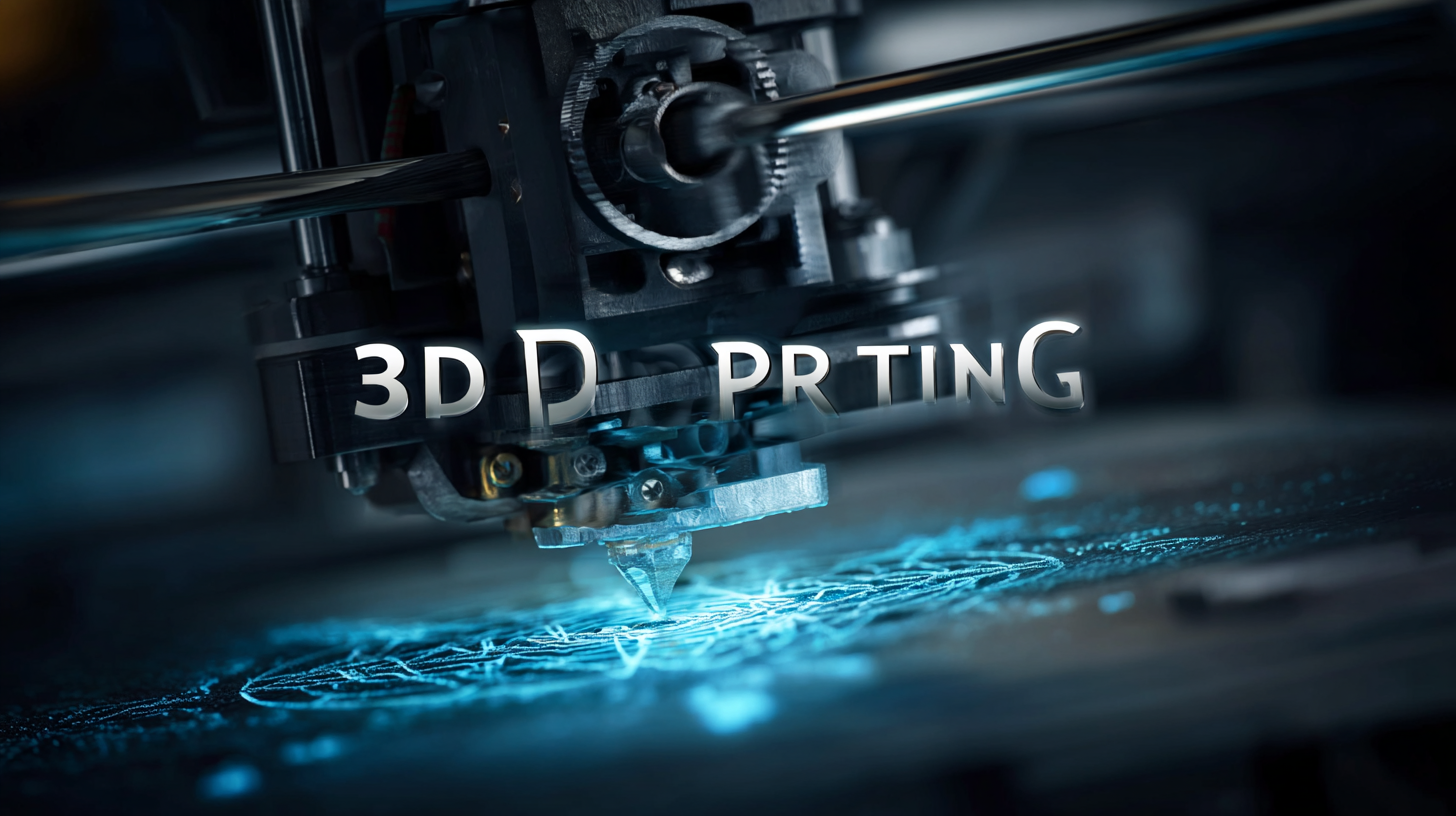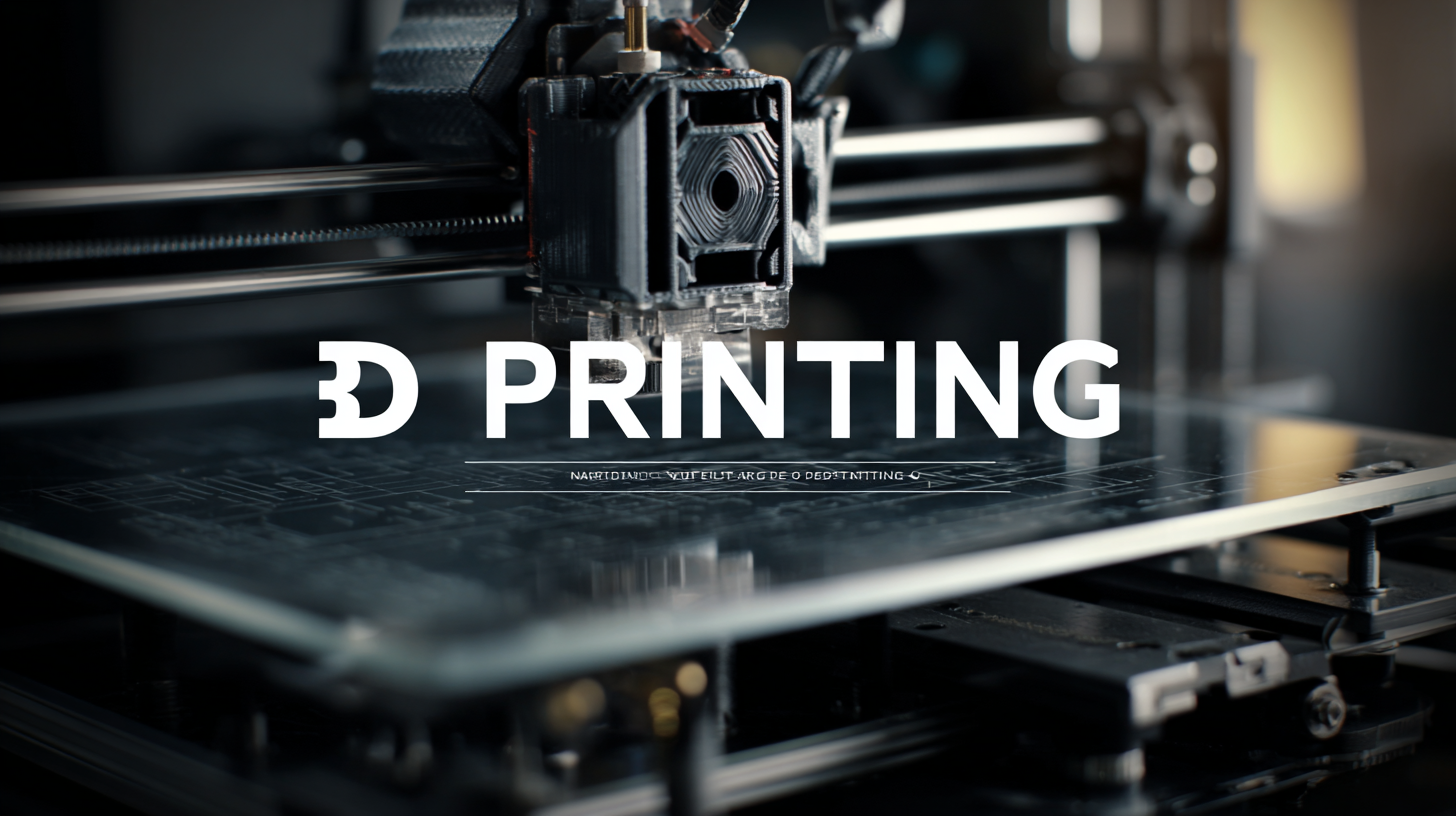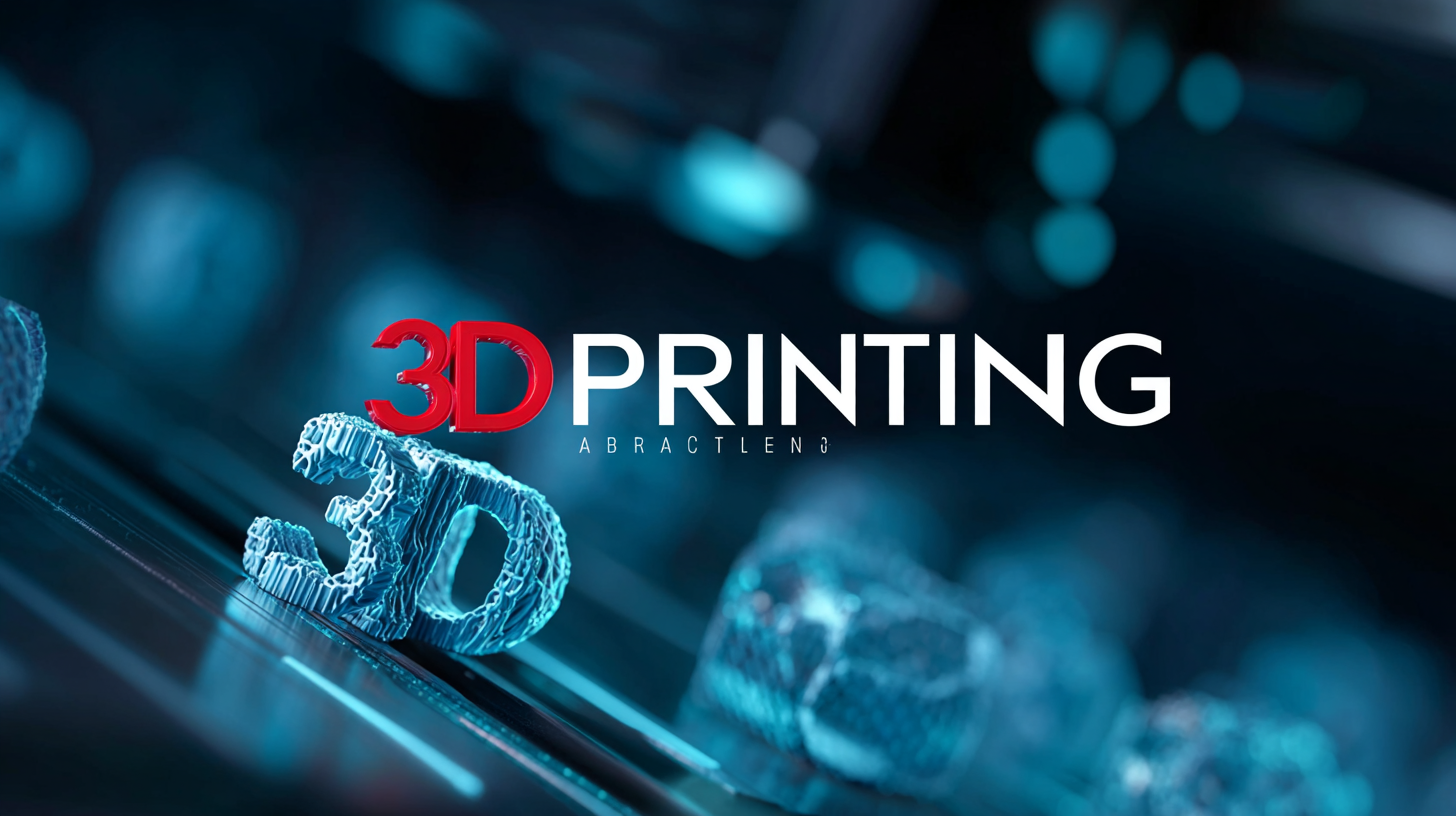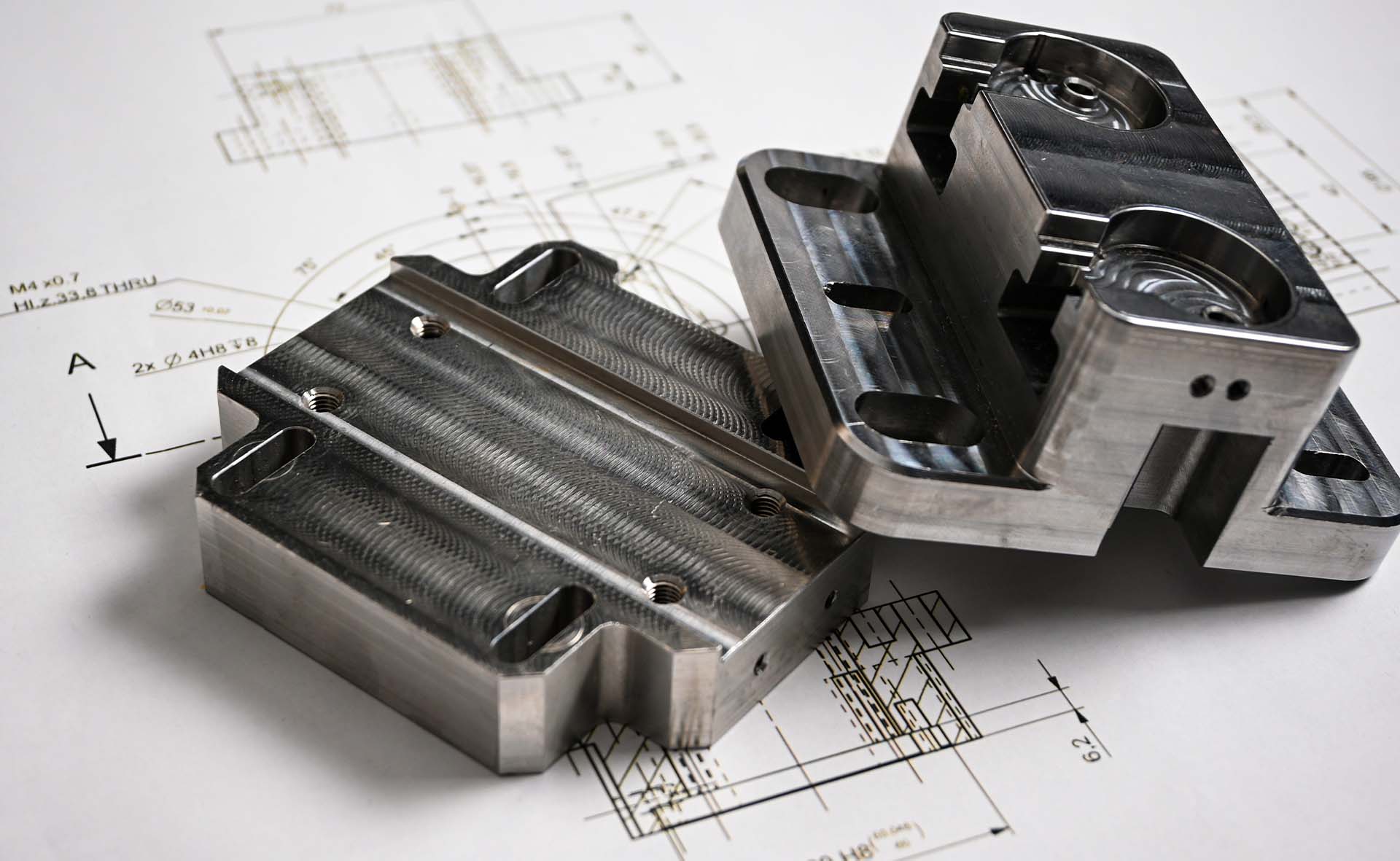
In the rapidly evolving landscape of manufacturing, rapid prototyping 3D printing has emerged as a pivotal technology, enabling businesses to innovate and adapt more swiftly than ever before. As organizations increasingly rely on this method to streamline product development, understanding the future trends in 3D printing becomes essential for maintaining a competitive edge.

Key among these trends are the cost-effective maintenance solutions and enhanced after-sales support that are revolutionizing the industry. These advancements not only reduce operational costs but also ensure that businesses can respond more effectively to customer needs and feedback.
This blog will explore the compelling reasons why embracing these trends is crucial for companies looking to thrive in the era of digital production and agile manufacturing.
3D printing technology continues to evolve, presenting various characteristics and applications across multiple industries. The selective laser sintering (SLS) process, for instance, is gaining traction due to its ability to produce durable parts from materials like nylon and metal. This versatility allows industries such as automotive, aerospace, and healthcare to leverage SLS technology for creating complex geometries and custom solutions, ultimately enhancing operational efficiency.
Tips: When selecting the right 3D printing technology for your application, consider the material properties required for your end product. For instance, metal 3D printing is ideal for high-strength applications, while polymer printing might be more suited for prototyping due to its quicker turnaround times and lower costs.
Another important aspect is cost-effective maintenance and after-sales support, which significantly influence the choice of 3D printing technology. Maintaining equipment and receiving timely support can drastically reduce downtime and ensure that production processes remain fluid. Businesses should prioritize suppliers that offer comprehensive maintenance plans and proactive customer service to truly maximize their investment in 3D printing technologies.
Tips: Evaluate the total cost of ownership of 3D printing systems, including potential maintenance contracts and support services. This can help you assess the long-term benefits and make an informed decision that aligns with your operational goals.
 The comparative analysis of costs between traditional manufacturing and 3D printing maintenance reveals significant advantages for the latter. According to a study conducted by Wohlers Associates, the additive manufacturing industry grew to $12.8 billion in 2020, with a projected annual growth rate of 27.2% through 2025. This rapid growth is largely due to the lower maintenance and operational costs associated with 3D printing. Traditional manufacturing often incurs high costs related to tooling, setup, and labor, whereas 3D printing allows for on-demand production, reducing waste and transportation expenses.
The comparative analysis of costs between traditional manufacturing and 3D printing maintenance reveals significant advantages for the latter. According to a study conducted by Wohlers Associates, the additive manufacturing industry grew to $12.8 billion in 2020, with a projected annual growth rate of 27.2% through 2025. This rapid growth is largely due to the lower maintenance and operational costs associated with 3D printing. Traditional manufacturing often incurs high costs related to tooling, setup, and labor, whereas 3D printing allows for on-demand production, reducing waste and transportation expenses.
Moreover, a report by Deloitte highlights that 3D printing can reduce the total cost of ownership by up to 90% in certain applications. This cost efficiency is particularly evident in maintenance and after-sales support. For example, spare parts that previously required long lead times and significant inventory can be produced locally, ensuring quick turnaround times and minimizing downtime. Consequently, companies can streamline their operations while cutting costs, making 3D printing an increasingly attractive option for businesses looking to stay competitive in a dynamic market.
In the rapidly evolving landscape of 3D printing, effective after-sales support strategies are becoming increasingly crucial for manufacturers looking to leverage this technology. A recent industry report highlighted that 2023 is projected to witness significant advancements in 3D printing, driven by the dual factors of economic uncertainty and technological opportunity. As companies like PIX Moving enhance their intelligent manufacturing capabilities, it underscores the importance of strong maintenance and support frameworks in maximizing the investment in 3D printing technologies.
Moreover, with the democratization of 3D printing products highlighted by experts, lowering the operational barriers and improving user experience is essential. Research indicates that as the accessibility of desktop 3D printers improves, providing robust after-sales support can differentiate leading suppliers from their competitors. Offering comprehensive training and responsive customer service will not only increase customer satisfaction but also drive adoption in mainstream applications. By establishing effective after-sales support, manufacturers can ensure that users fully benefit from their 3D printing solutions, maximizing productivity and innovation.
As the 3D printing industry continues to evolve, the significance of data-driven insights in maintenance trends cannot be understated. One of the most crucial aspects is the identification of common issues that arise during the printing process. By analyzing historical data from printers, companies can predict potential failures before they emerge. This proactive approach enables businesses to schedule maintenance checks and reduce downtime, ultimately saving costs associated with unscheduled repairs or disruptions in production.
Moreover, the integration of predictive analytics tools allows manufacturers to optimize their maintenance schedules further. By leveraging real-time data, they can adjust maintenance frequency based on the actual condition of the machines rather than adhering to a rigid timetable. This tailored strategy not only extends the lifespan of 3D printers but also minimizes resource wastage, ensuring that companies remain competitive in a cost-sensitive market. With the right focus on maintenance trends, businesses can harness the full potential of their 3D printing capabilities while effectively managing expenses.
| Maintenance Type | Frequency | Average Cost ($) | Downtime (Days) | Satisfaction Rate (%) |
|---|---|---|---|---|
| Routine Maintenance | Monthly | 150 | 1 | 85 |
| Parts Replacement | Quarterly | 600 | 2 | 75 |
| Software Updates | Biannually | 300 | 0.5 | 90 |
| Emergency Repairs | As Needed | 800 | 3 | 65 |
| Calibration | Monthly | 100 | 0.5 | 80 |
In today’s rapidly evolving landscape, businesses must prioritize future-proofing their operations, particularly within the realm of 3D printing. As this industry is projected to exceed a valuation of $40 billion by 2030, adapting to emerging trends becomes imperative. Companies should be keenly aware of the increasing integration of 3D printing technologies across various sectors, from automotive to fashion. This adoption not only enhances production efficiency but also fosters innovation, positioning businesses to meet the shifting demands of discerning customers.

Furthermore, understanding how to leverage cost-effective maintenance and after-sales support in 3D printing can significantly impact a company's bottom line. By investing in scalable technologies that can adapt to evolving customer expectations, businesses can stay ahead of their competition. As trends such as AI and automation shape the landscape, those who embrace these advancements will not only enhance their operational agility but also fortify their market presence. The key focus remains on maintaining flexibility and readiness to integrate new technologies, ensuring that firms remain relevant amidst the brisk pace of industrial change.

| Cookie | Duration | Description |
|---|---|---|
| cookielawinfo-checkbox-analytics | 11 months | This cookie is set by GDPR Cookie Consent plugin. The cookie is used to store the user consent for the cookies in the category "Analytics". |
| cookielawinfo-checkbox-functional | 11 months | The cookie is set by GDPR cookie consent to record the user consent for the cookies in the category "Functional". |
| cookielawinfo-checkbox-necessary | 11 months | This cookie is set by GDPR Cookie Consent plugin. The cookies is used to store the user consent for the cookies in the category "Necessary". |
| cookielawinfo-checkbox-others | 11 months | This cookie is set by GDPR Cookie Consent plugin. The cookie is used to store the user consent for the cookies in the category "Other. |
| cookielawinfo-checkbox-performance | 11 months | This cookie is set by GDPR Cookie Consent plugin. The cookie is used to store the user consent for the cookies in the category "Performance". |
| viewed_cookie_policy | 11 months | The cookie is set by the GDPR Cookie Consent plugin and is used to store whether or not user has consented to the use of cookies. It does not store any personal data. |

